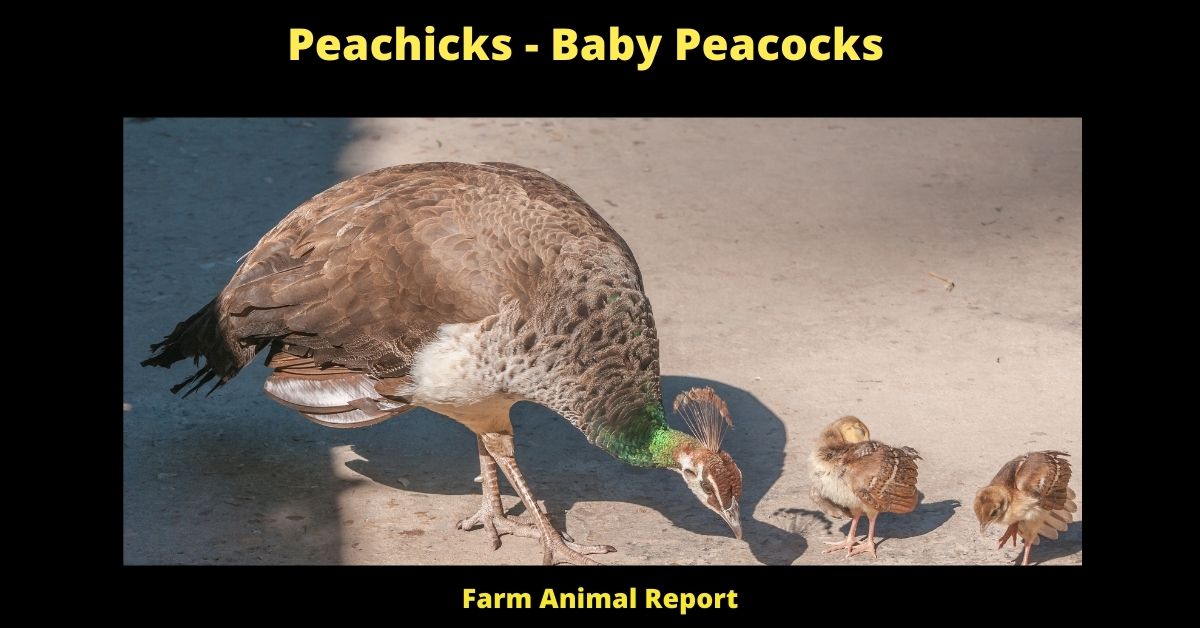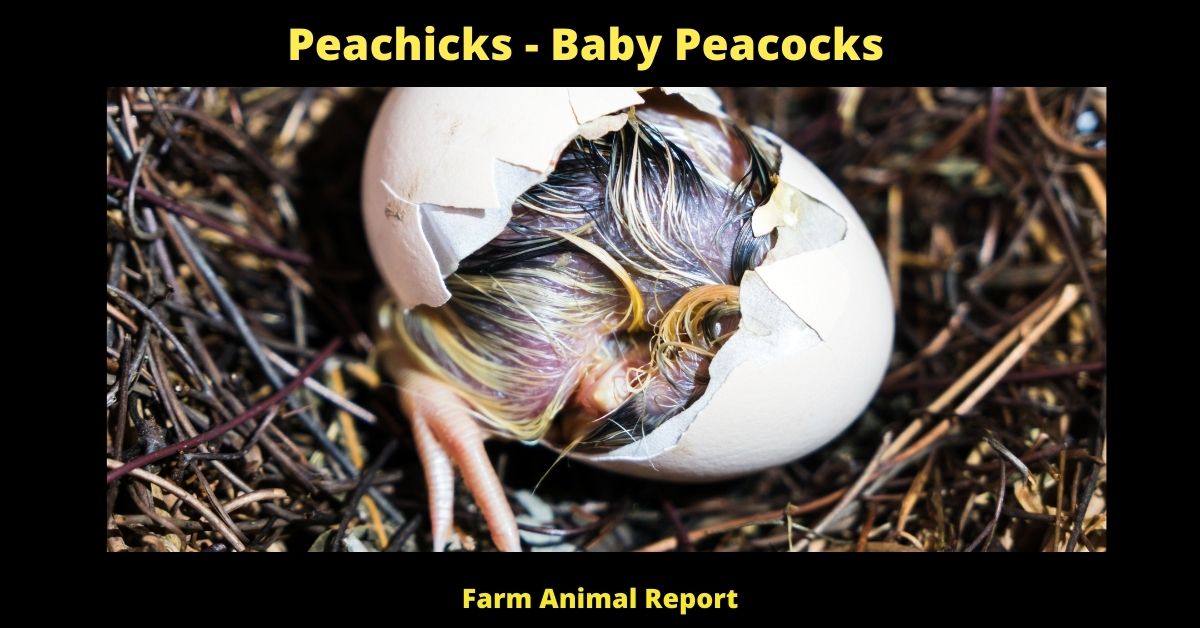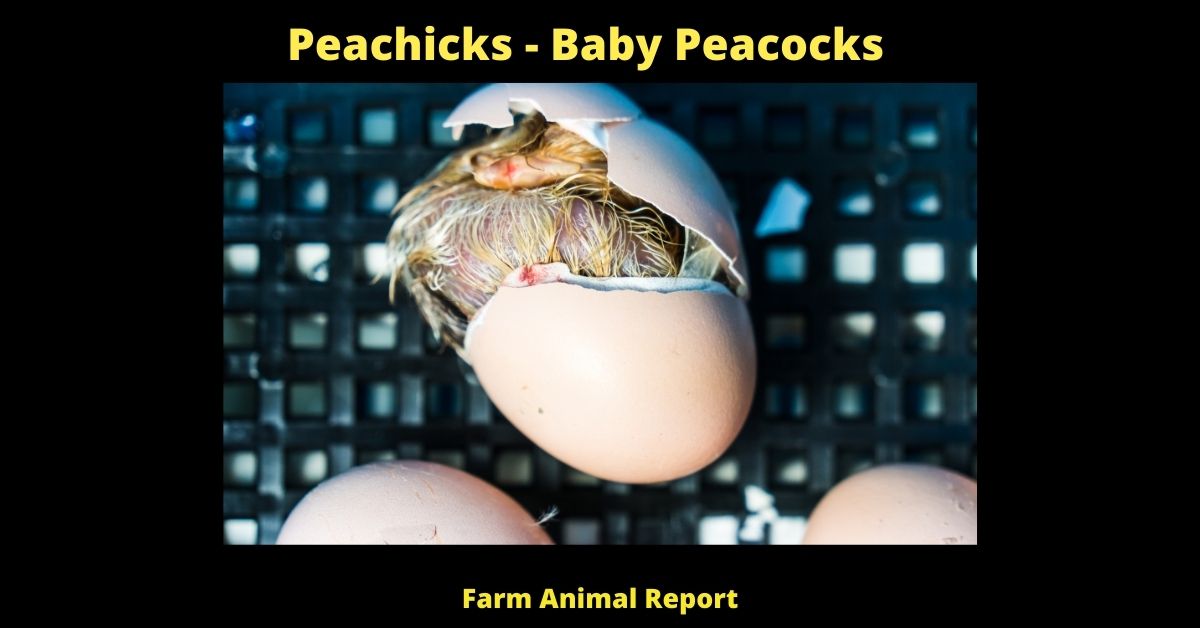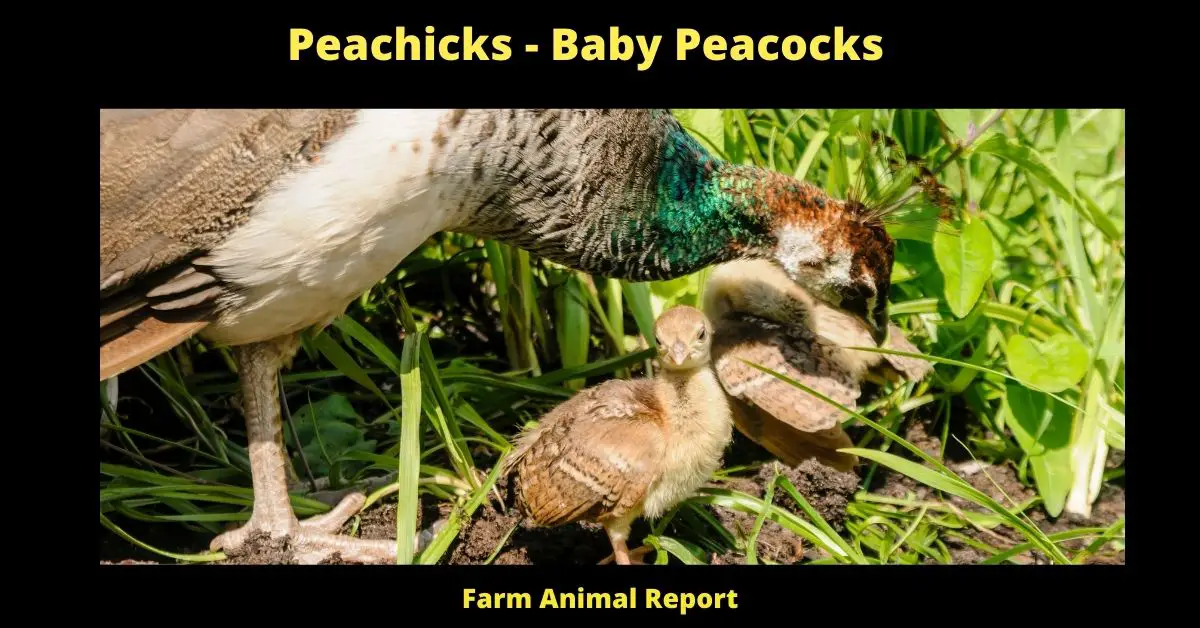As general rule peachicks are baby peafowl. Peafowl is a type of peacock, who is the male peahen and peachicks. When bred with other breeds or species white and blue pigment will be created in their plumage giving them different colorations such as black-breasted reds (also known as cinnamon) instead of pure blacks like those found on a Javan. While the majority of peachicks will be kept by breeders, some may end up in pet stores and even on farms with little attention paid to their coloration.
What are Peachicks
A baby peacock is called a peachick. Peachicks are so cute and tiny when they hatch but quickly grow into beautiful, majestic peacocks! All of the feathers on their body develop in just two weeks’ time which starts out with an orange color that then turns into bright yellow all over the body and tail feathers.
Peachicks – Baby peacocks look like a combination of all their parents’ colors which is where they get the name “peachicks”. The head, neck, shoulders, and back are green while the rest of them have light blue to dark purple coloring with some orange spots on top. They also have yellowish-green tails that are black on top and yellow on the bottom. Peachicks also have a beautiful display of both colors to attract their moms!
Jump to Peacock Babys Peafowl – Extensive Guide
Peacocks can grow up to be between four and five feet long with tails that measure more than half their length. They weigh an average of twenty pounds which is about eleven kilograms or one-fifth of what they weigh when fully grown.

Peacocks can be found in many places around the world, mostly on small islands near warm climates like India and Australia. They are usually quite solitary but will stick together during mating season to breed or when there is not enough food for them to find on their own! Peachicks go through about three months of growth before they are able to leave their moms and become fully independent.
Four weeks old peachicks, or about three months of age, can find food on their own which is when they usually start leaving their mothers. They only receive enough milk from the mother for them to be healthy during infancy but have extremely long claws that allow them to climb trees to flee predators. Peachicks will usually stay with their mothers for about six months of age before they are able to find food on their own, leave and live independently!
Peacocks tend to mate at the end of the mating season which is around November or December in some climates but can be anytime between January and March when it comes to mating. These gorgeous birds are also polygamous meaning they will mate with several partners during mating season!
Peacocks can be found in many places around the world, mostly on small islands near warm climates like India and Australia. They are usually quite solitary but will stick together during mating season to breed or when there is not enough food for them to find on their own! Peachicks go through about three months of growth before they are able to leave their moms and become fully independent.
Jump to A Peacocks Nest: New Arrivals
Why do people want to raise them
Peachicks are raised for
- Feathers – Train when Adults
- Fertilizer – Free
- Food – You are feeding them for months before selling, but they only eat around $15 worth of feed. They also make good compost!
- Pet Peacocks can be very socialized to people and will follow you around the yard or sit on your shoulder like a parrot. If you have young children or are just looking for a low-maintenance pet that doesn’t scratch, bite, won’t smell up the house, and can eat table scraps – this might be your perfect match.
- Eggs – Peacocks lay eggs that are edible, but they have a much stronger flavor than chicken eggs. The shells also look different and need to be handled differently
- Guarding – Most people who have peacocks say that they are very good at protecting their flock. They will not attack or kill predators, but they do alarm the other birds in the yard when danger is near.
Jump To Pet Peacocks – **ROYAL APPEARANCE**
Peacock Behavior
- Peafowls can become aggressive during mating season and may try to protect their territory by chasing away humans or other animals that get too close.
- Peacocks are also known for their loud, shrill cry which can become a nuisance if they decide to do it in the middle of the night or early morning hours.
- Training – Most people will recommend talking with an experienced breeder before deciding whether or not Peafowls are right for you.
- They will also help you with how to properly train your peacock and can provide information about their behavior as well as tips for preventing or dealing with some of the problems that come up in everyday life such as chasing away predators, protecting territory during mating season, noise pollution, etc.

Jump to What Sounds and Calls do Peacocks make? What do they mean?
How much space do they need
Peachicks need a lot of space to roam around. They need a large fenced-in area, and they should be allowed out daily if possible. Since Peachicks spend most of their time on the ground it is important that there is a nice patch of grass for them to graze upon as well as some leafy plants so they can have proper access to food. They are not very good at climbing trees so if you do have any in your area you should avoid letting them near it.
What do Peachicks eat?
Peachicks are born fully feathered and with open eyes, but they still need their parents to look after them. They feed on a special liquid produced by the adult female called “crop milk” which is very rich in protein. After three months, Peachicks become independent from their mothers.
They then eat plant matter and small insects.
Store feeds include finely chopped hard-boiled egg, finely chopped cooked chicken, and soaked dry dog food.
They can be fed on a regular basis several times per day or left to feed themselves once they are fully feathered (approximately six weeks).
Individuals should be supervised at this stage as they may not eat enough if unattended for too long.
Peachicks can be fed with a finely chopped-up mixture of birdseed and finely chopped fruit or vegetables.
Check with your Local Feed Store and your Vet for their Recommendations
Jump To Why do Peacocks Spread their Feathers? ** IRIDESCENCE**
Where can you buy peachicks?
Peachicks can be purchased in most pet stores, farm supply stores, and online.
Breeders are also a great source for finding peacocks.
Peacock Farms are good for peacocks and peachicks.
Can buy both male and female peafowl at the same time.
* Many people raise their own breeding stock because it is less expensive than buying them from a store or breeder, but then again you may not know what kind of conditions they were raised in so for some this could be very risky.
Can I incubate my own peachick eggs? Yes
Peachick eggs can be incubated at home. Steps include:
- Choose a suitable incubator.
- The easiest way to do this is by buying an automatic egg turner that can be found at most local feed stores or ordered online. These turners have been tested and calibrated for the appropriate temperature ranges needed for peachicks, so you’re sure not to fail from incorrect temperatures! Egg turners can be found online or at local feed stores.
- Wash the eggs gently but thoroughly before placing them in an egg carton inside the incubator.
- Fill the machine with water to around 50% capacity and turn it on, making sure that the temperature is reached before adding eggs.
- Add the eggs and turners to the incubator.
- Cover box with a cloth, making sure all openings are covered tightly-especially the air holes! Check on your machine daily for temperature fluctuations or bad smells that may indicate bacterial growth. You can also candle eggs at this time (shine a light through an egg) to check if any have died. If you find any bad eggs, remove them immediately and clean the machine thoroughly!
- Need to maintain a temperature of 99-102 degrees Fahrenheit, and humidity of 55%.
- A thermometer can be used to check the temperature.
- If it’s too hot you might see some deformities in your peachicks.
- The ideal conditions for hatching are a constant 100 degrees F (37.78 Celsius), 70% or higher humidity, and a 14-18 hour light cycle.
- This can be achieved by covering the vents of an incubator to maintain humidity.
- Check on your eggs regularly for temperature fluctuations or signs of bad smells that may indicate bacterial growth.
- You should also candle the egg (shine a bright flashlight through it) to check if any have died.
- If you find any bad eggs, remove them immediately and clean the incubator thoroughly!
Jump to Can Peacocks Live in Cold Weather?
Final Thoughts
In Summary, it is illegal to keep a peacock as a pet in most cities and towns. Check your local regulations, and remember their loud nature.
Peacocks can be kept with another peafowl, but you must have at least two per male or three for one male depending on the species being housed together.

Males are usually not aggressive towards each other unless they feel their territory is being threatened.
Peacocks are opportunistic feeders and will eat a wide variety of foods, but they can also become obese if allowed to overindulge in certain human food items such as bread or pastries.
When it comes to raising peachicks at home there is a lot involved! Not only do you need to be prepared for the commitment of time and money, but you need to do your research as well!


